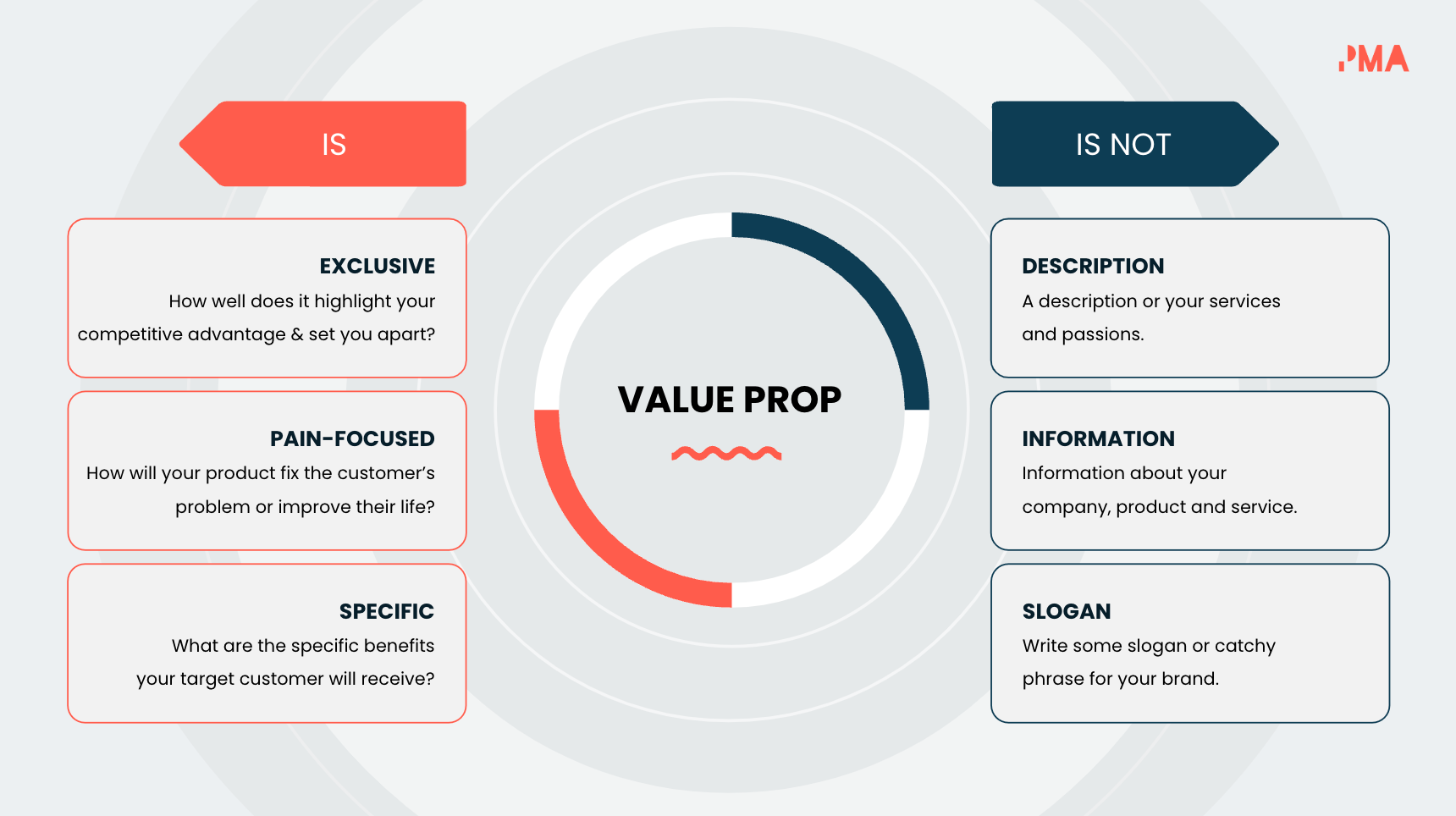What is our value proposition framework?
Our value proposition framework is a template we've created that's designed to help marketers define the unique value of a product or service.
The goal is to guide you in developing a structured approach to articulating why customers should choose your product over competitors, emphasizing the specific benefits and advantages that set your offering apart.
This template is essential for creating compelling and differentiated value propositions that resonate with your target audience and drive business success.
Click here to get your own customizable value proposition template.
What should a value proposition framework include?
- Central value proposition: A clear statement explaining why your ideal customer should choose your product over any other.
- Prospect-level value proposition: Tailored value propositions for different customer segments, highlighting specific benefits for each.
- Product-level value proposition: Specific reasons why customers should buy a particular product from your range.
- Process-level value proposition: Reasons why customers should take specific actions, such as clicking on an ad or completing a form.
- Market and customer segments: Identifying the specific groups of customers you are targeting and understanding their needs.
- Benefits vs. costs: Highlighting the benefits customers will receive compared to the costs they incur.
- Differentiation: Outlining what makes your product unique and better than alternatives.
- Proof and credibility: Providing evidence and testimonials to substantiate your claims and build trust.
How to use this framework template
Our value proposition framework is formatted in a handy slide deck, so it should be straightforward to use. But if you need any additional guidance, we've created a granular guide here.
Step-by-step guide:
- Define your central value proposition: Start by crafting a clear and compelling statement that explains why your ideal customer should buy from you rather than any of your competitors.
- Tailor prospect-level propositions: Develop specific value propositions for different customer segments, ensuring each one addresses the unique needs and preferences of that segment.
- Detail product-level benefits: Highlight the specific reasons why customers should buy each product in your range, focusing on the unique benefits and advantages of each.
- Create process-level propositions: Explain why customers should take specific actions, such as engaging with a particular marketing campaign or clicking on an ad.
- Identify market segments and customer needs: Clearly define the customer groups you are targeting and understand their specific needs and pain points.
- Highlight benefits vs. costs: Emphasize the benefits your customers will receive compared to the costs they will incur, making a compelling case for your product.
- Differentiate your offering: Clearly outline what makes your product unique and better than the competition, focusing on unique attributes and advantages.
- Provide proof and credibility: Include testimonials, case studies, and other forms of evidence to substantiate your claims and build trust with your audience.
- Regularly review and update: Ensure your value proposition remains relevant by regularly reviewing and updating the framework based on market changes and customer feedback.
By following these steps, you can create a robust value proposition strategy that helps your product stand out in the market and resonate with your target audience.
Ready to get started? Great - simply download the framework document below.
Download your value proposition template





















 Follow us on LinkedIn
Follow us on LinkedIn 

.svg?v=f66bcedace)